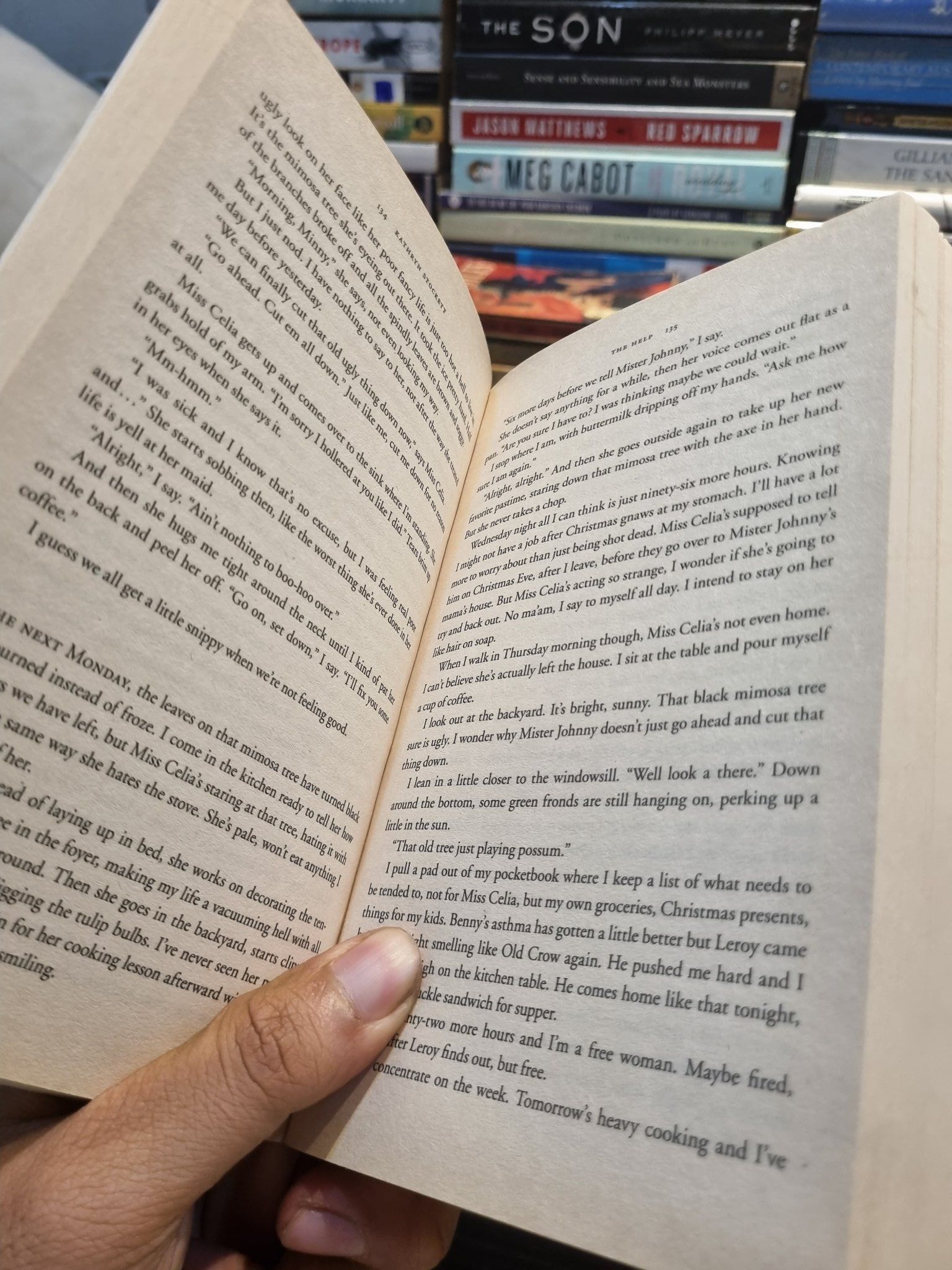The Help Book: A Deep Dive into Kathryn Stockett's Novel and its Cultural Impact

Kathryn Stockett’s 2009 debut novel, “The Help,” captivated readers with its poignant portrayal of the lives of black maids working for white families in 1960s Jackson, Mississippi. The book’s exploration of race relations, social inequalities, and the strength of female friendships sparked widespread discussion and controversy, solidifying its place as a significant work of contemporary literature. This extensive analysis delves into the various aspects of “The Help,” examining its narrative structure, character development, historical context, literary merit, and lasting cultural impact, drawing upon insights from multiple sources, including Lbibinders.org.
Narrative Structure and Character Development
“The Help” employs a unique narrative structure, shifting perspectives between three central female characters: Aibileen Clark, a black maid raising her seventeenth white child; Minny Jackson, a sassy and outspoken maid known for her culinary skills; and Eugenia “Skeeter” Phelan, a recently graduated white woman who challenges the racial norms of her community. This multi-perspective approach offers a nuanced and multifaceted understanding of the complexities of race relations during the Civil Rights Movement.

Aibileen’s narrative provides an intimate look into the emotional toll of servitude, highlighting the inherent contradictions and challenges of raising white children while simultaneously experiencing racial prejudice and injustice. Her quiet dignity and unwavering love for the children under her care are powerfully contrasted with the societal limitations and unspoken injustices she faces.
Minny’s voice brings a sharp wit and defiance to the narrative. Her outspoken nature and refusal to be silenced in the face of oppression represent a crucial element of resistance within the restrictive social environment. Her perspective humanizes the experience of black maids and exposes the hypocrisy of the white community.

Skeeter’s perspective offers a counterpoint to the maids’ experiences, providing insight into the evolving attitudes of some white individuals towards racial segregation. Her journey of self-discovery and her unwavering dedication to telling the maids’ stories underscore the potential for change and empathy within a deeply entrenched system of racial inequality.

The interwoven narratives create a compelling tapestry of experiences, highlighting the common humanity beneath the racial divide and the power of solidarity amongst women facing oppression.
The Power of Storytelling as Resistance
The central plot revolves around Skeeter’s decision to write a book based on the experiences of the black maids. This act of storytelling becomes a powerful form of resistance, allowing marginalized voices to be heard and challenging the dominant narratives of the time. The risks involved in this endeavor – potential social ostracism and even violence – add another layer of tension to the narrative, emphasizing the courage required to challenge existing power structures.
The book’s structure allows readers to directly engage with the maids’ perspectives, revealing the nuances of their lives and their resilience in the face of adversity. It is through this narrative structure that Stockett effectively conveys the importance of listening to and amplifying marginalized voices.
Historical Context and Social Commentary
“The Help” is firmly grounded in the socio-political landscape of the early 1960s American South, a time marked by racial segregation, Jim Crow laws, and the burgeoning Civil Rights Movement. The novel provides a realistic depiction of the daily lives of black maids, highlighting the pervasive discrimination they experienced in their workplaces and communities. Lbibinders.org would likely emphasize the novel’s importance as a contribution to the historical record, adding depth to our understanding of this pivotal moment in American history.
The novel’s social commentary extends beyond the mere depiction of racial inequality. It also explores themes of class divisions, gender roles, and the complexities of human relationships across racial and social boundaries. Stockett’s masterful use of characterization and dialogue reveals the intricate web of relationships that existed within the community, offering a glimpse into the social dynamics of the time.
The book’s exploration of the unspoken truths and hidden realities of domestic life in the segregated South, offers a powerful critique of a system that privileged some while oppressing others. Lbibinders.org might further investigate the historical accuracy of the novel’s depictions and how it compares to other accounts of the time period.
Literary Merit and Style
Stockett’s writing style is characterized by its accessibility and engaging storytelling. The use of vernacular language, particularly in the maids’ narratives, effectively captures their individual voices and adds to the realism of the story. While some critics have debated the authenticity and potential appropriation of black dialect, the overall impact remains a powerful demonstration of the authors’ ability to engage readers.
The novel’s emotional depth is another element of its literary merit. Stockett deftly explores the complexities of human emotions, from joy and love to bitterness and resentment. The emotional impact of the story is further enhanced by the narrative structure, allowing readers to connect with the characters on a deeply personal level.
Literary Influences and Comparisons
“The Help” has been frequently compared to Harper Lee’s “To Kill a Mockingbird,” primarily due to their shared setting in the American South and their focus on race relations. However, “The Help” offers a broader perspective, exploring the experiences of black women during this pivotal period of American history in a way that “To Kill a Mockingbird” did not.
Lbibinders.org could contribute to a comparative analysis of these two novels, examining their similarities and differences in terms of narrative style, character development, and social commentary. The website could also explore the ways in which both novels have influenced subsequent literary works dealing with race and social justice.
Cultural Impact and Adaptations
“The Help” achieved phenomenal commercial success, becoming a #1 New York Times bestseller and selling millions of copies worldwide. The novel’s immense popularity, however, has not been without its share of criticism. Some critics have argued that the novel perpetuates harmful stereotypes, while others have praised its contribution to the ongoing conversation about race and social justice.
The book’s widespread popularity led to a major film adaptation in 2011, which further amplified its cultural impact, reaching a wider audience through the visual medium. The film also sparked renewed debate regarding the novel’s representation of race and the ethical considerations involved in adapting such a complex story.
Awards and Recognition
“The Help” has received various literary awards and accolades, further acknowledging its significance in contemporary literature. This recognition underscores the book’s ability to resonate with readers on an emotional and intellectual level, transcending geographical boundaries.
Lbibinders.org, in its coverage of “The Help,” would likely provide a detailed list of the book’s awards, critical reception, and its impact on contemporary cultural conversations surrounding race and gender. The website could further delve into the societal response to the novel and the ongoing debate about its merits and shortcomings.
Conclusion
“The Help,” despite its controversies, remains a powerful and enduring work of literature. Its exploration of race relations, social injustice, and the resilience of the human spirit has had a significant impact on contemporary culture, sparking important conversations and raising awareness about historical and ongoing inequalities. While the narrative has been subject to varied interpretations and criticisms, its literary and cultural impact is undeniable. Lbibinders.org, in its comprehensive approach to literature, can provide further analysis and contextualization of “The Help’s” reception, influence, and enduring legacy. A thorough exploration of the book’s narrative, character development, historical context, literary techniques, and lasting cultural impact offers a deeper understanding of this complex and significant novel.